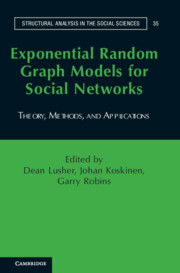References
Published online by Cambridge University Press: 05 April 2013
- Type
- Chapter
- Information
- Exponential Random Graph Models for Social NetworksTheory, Methods, and Applications, pp. 303 - 326Publisher: Cambridge University PressPrint publication year: 2012

